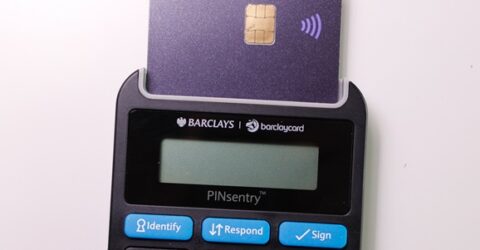Top security tips for safe online banking
As digital banking continues to increase, safe online banking tips are vital to keep you – and your money – safe.

The increasing digitisation of society may be a source of frustration to cash lovers and people with concerns about endemic surveillance, but the pace of change is undeniable.
It’s been estimated that 93 per cent of the British population now uses online banking, with a quarter of us holding digital-only accounts with online providers like First Direct.
The ubiquity of digital payments is reflected in the growing number of venues around the country where cash is no longer accepted as a payment method.
This enrages some people, yet from the vendor’s perspective, card payments are quicker and easier than having to maintain cash floats and ensure staff are counting change correctly.
Nonetheless, the switch to digital banking payments requires diligence and vigilance from account holders.
We’ve recently written about new waves of payment fraud, with bad actors constantly seeking vulnerabilities in consumer-facing hardware, software, tools and applications.
A key point of weakness is the internet connection used to conduct online transactions, whether completing an ecommerce payment or simply checking current balances.
As such, it’s vital to employ best practice when doing anything over the internet involving money.
Safe online banking is more important than it’s ever been.
Safe as houses?
To begin with, ensure you only ever conduct financial affairs across a secure internet connection, such as your home’s broadband or WiFi network.
Mobile 4G and 5G networks should also be sufficiently encrypted against people spying on your activities.
The same cannot be said for insecure public WiFi networks with shared passwords. Someone with specialist software could spy on the data being sent by devices on the same network.
If you do need to conduct financial transactions over a public network, install and use a VPN on your device to ensure information can’t be spied on by third parties.
You could also try using the Tor network, though the randomised nature of data transfers can lead to timeouts, while host servers may reject data requests from devices cloaked in this way.
If you’re in a public place (or even beside a street-facing window in your own home), ensure your screen isn’t visible to strangers, who might be able to view confidential account data.
Safety first
Having ensured any communications will be protected from other people’s gaze, the next step is to approach any account logins or online payments with caution.
Install antivirus software onto Mac or PC devices; don’t provide financial data across insecure http connections; never open unsolicited attachments or click unknown email links.
The latter could install a Trojan which stealthily monitors online activities, giving criminals key account passwords, PIN codes and login credentials.
For the same reason, safe online banking requires robust passwords which haven’t previously been obtained in a data breach – some web browsers now warn you of potential breaches.
Write passwords down in an offline form like a notebook or use a password manager utility to minimise the risk of forgetting a password and ending up locked out of your own accounts.
It’s tempting to begrudge two-factor authentication, but it’s there to ensure safe online banking with minimal risk of accounts being hacked or drained by a third party.
Ensure you always log out of any accounts after you’ve finished. Don’t assume closing a browser window or putting a device onto standby provides sufficient protection.
Equally, zero day malware comprises brand new threats, so give any antivirus software free rein to automatically install updates and proactively scan files for potential threats.






